Recently on Facebook, we were having a discussion about constructive criticism of your art. Someone had been on the receiving end of it, and was finding it hard to shake the feelings of self doubt and discouragement that had resulted.
I think we pretty much all know that ‘it’s not personal’, but if that worked every time, we wouldn’t find ourselves having these discussions or feeling those icky feelings so often in response to certain comments. I think the reason it isn’t enough is because it’s one of those things it’s easy to know with your brain, but harder to integrate and live as a personal truth.
I have a theory about this, but first I’ll tell you a little story.
Soon after my return from Mexico, I went to visit my parents. I took along the sketchbook I’d been working in during the trip, because they like to see what I’ve been up to. As they were leafing through the pages, my mum suddenly said, ‘I don’t like that one’.
Don’t hold back Mum, tell us what you really think! I laughed, and it occurred to me that I could just as easily have felt that painful twinge of self doubt, which then so often leads to rerunning the incident over and over, and using it to postulate increasingly absurd and unkind theories about the validity of even carrying on making art.
What I realised was this: every single one of those pages was done for me and me alone.
Yes I shared them, but that was secondary. And because they were for me – for my own delight, exploration, and satisfaction – I had taken the time to sit with them, to discern how I felt about each one, what I felt was satisfying and what didn’t please me or could benefit from further effort or improvement in some way.
I knew what bits I loved and what bits I didn’t, and I had made my peace with that. I was ‘clean’ and complete with all of them, so any further comment on them was very clearly nothing to do with me.
I get that this isn’t always easy to do, especially in the moment. And let’s face it, it was my mum, who is not a practicing artist, art teacher, or art critic and whose opinion, although completely valid, is not based in any ‘official’ knowledge of art!
But isn’t that so often the case? Frequently it’s our friends and family, whose opinions we do care about, but who often don’t know the first thing about art beyond what they personally like and don’t {if that even}, who can make the kind of comments that can cut to the quick and make us question everything. And truthfully, ‘constructive’ criticism – along with ‘concern’ – can often sound a lot like thinly veiled actual criticism.
This is why it’s so important to come to that clean and peaceful place in ourselves FIRST. The cleaner we are internally – meaning the less sticky places or awkward feelings we are carrying inside about what we’ve created – the less hooks there are for all those well meaning comments to snag on.
What can we do?
The thing to do then is to go inwards. If you know me or have taken any of my courses you’ll probably know that for me it’s inwards first, outwards second. Most of us are taught the other way around, and that can be a very hard habit to break, but it can be done! Hard doesn’t mean impossible. After all, I managed it. 😉
It’s time to get cosy with your art – just you, your paintings, and maybe a fortifying cup of tea and a biscuit. {Or a cookie for my US friends – biscuit means scone over there I gather, and who knows what a scone is! Anyway.}
Try this
Take out your current sketchbook or your most recent work and lay it all out. Do your absolute best not to let this become a self-flagellation session; that would be completely missing the point and not help you get where you want to go.
The desired outcome here is to be able to look at your art with a cooler eye. Of course you’re going to have feelings about it – let’s not pretend you’ll necessarily reach neutral – but just for this exercise, those feelings can go to the corner and mind their own business for a few minutes.
Look at each piece and consider what you feel works and doesn’t work. This isn’t about necessarily fixing it, and definitely not right now; it’s about refining your ability to LOOK, to discern what satisfies you and what you might have done differently.
It doesn’t matter if you don’t know how you would have done it differently; again, not the point. Just be clear in yourself how each piece sits with you, knowing that inevitably some will be favourites and some you heartily intend never to see the light of day!
When you know that some of your art is likely to please others, and some isn’t – because that’s just how it goes – and when you know what pleases and satisfies you, and what doesn’t, it becomes much easier to navigate ‘out there’.
Mindful sharing
If you’re going to share any of your art, be very mindful about what you share and with whom. Bear in mind that sharing on social media is tantamount to inviting comments, and that people often give unsolicited opinions without even really thinking about what they’re saying or how it might be construed.
Be clear with people what kind of feedback you’d like, if any. Ask for gentle help with improvements from a kind mentor if that’s what you’re after, but if you’re looking for approval, just know that you may not get it, and that’s why having clarity within yourself is essential. {And actually, doing anything for approval is a slippery slope.
Don’t forget
- This is a process and it takes practice, just like any other aspect of life we want to integrate.
- Don’t let outside comments stop you from doing what you know inside is important to you.
- Always go inside first! Get your relationship with your own work clear before sharing it.
- Seek out supportive environments {Facebook groups can be great for this if your day to day life isn’t filled with practicing artists! You can join mine here.}
- Be mindful about where you share your work and with whom.
- Be honest. Ask for supportive feedback, and if you don’t feel quite ready to hear any constructive criticism, say so. Most humans will understand that being at the beginning of learning something new is a vulnerable time.
- It IS them, not you. 🙂 People like to air their opinions, but that’s just it; they are THEIR opinions and are about them and what they think – nothing to do with you at all.
Eventually you’ll be able to share any of your work with anyone and never mind what they think of it or say about it or kindly suggest!
“I get out my work and have a show for myself before I have it publicly. I make up my own mind about it – how good or bad or indifferent it is. After that the critics can write what they please. I have already settled it for myself so flattery and criticism go down the same drain and I am quite free.”
Georgia O’Keeffe
Over to you
How do you feel about sharing your work? Have you had any challenges with people’s opinions? Got any good tips for overcoming painful feedback? What have you learned from constructive criticism of your art? Tell us in the comments!

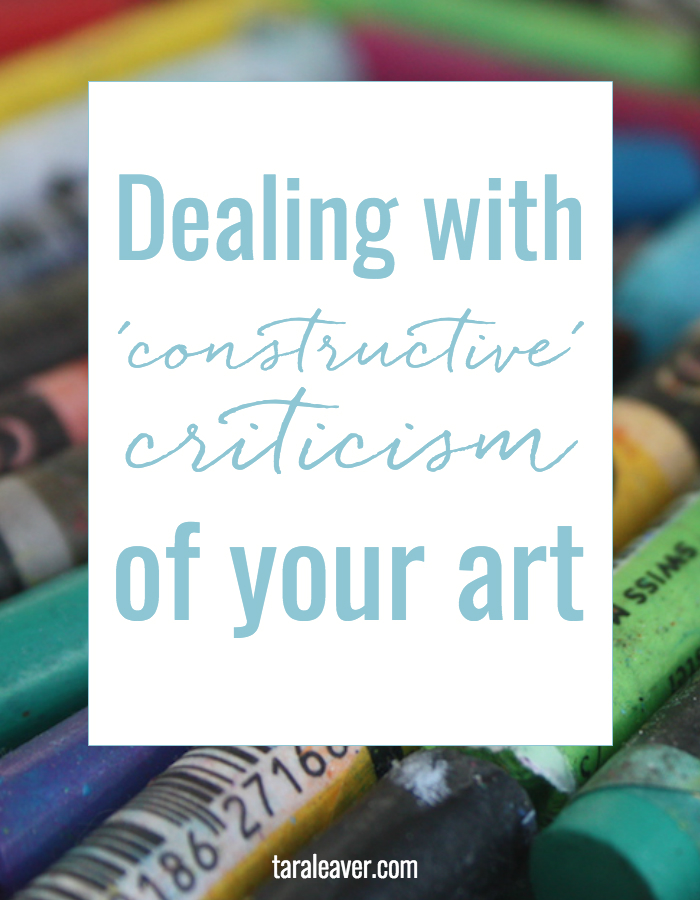
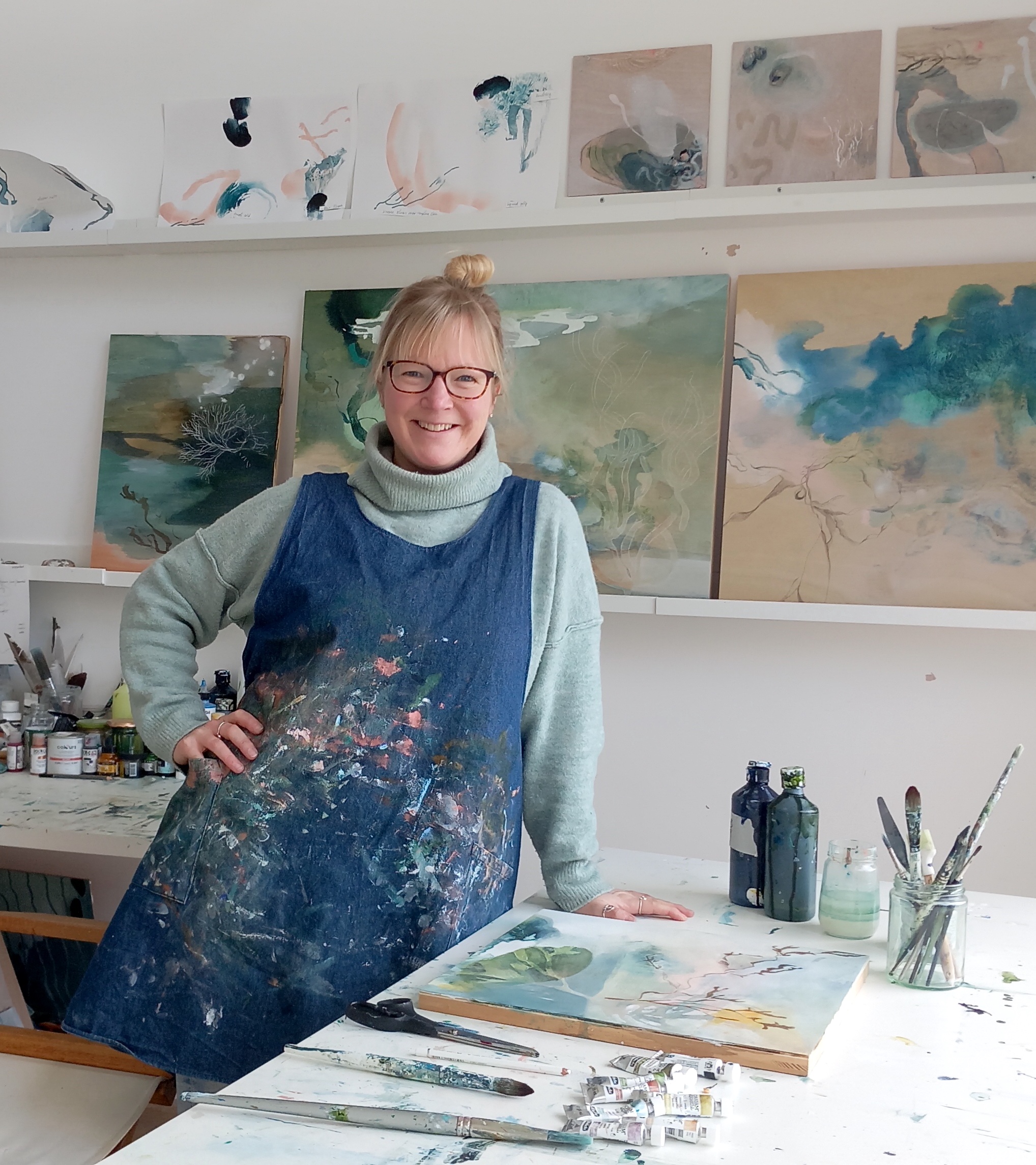
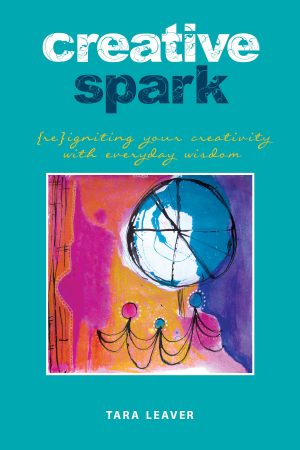
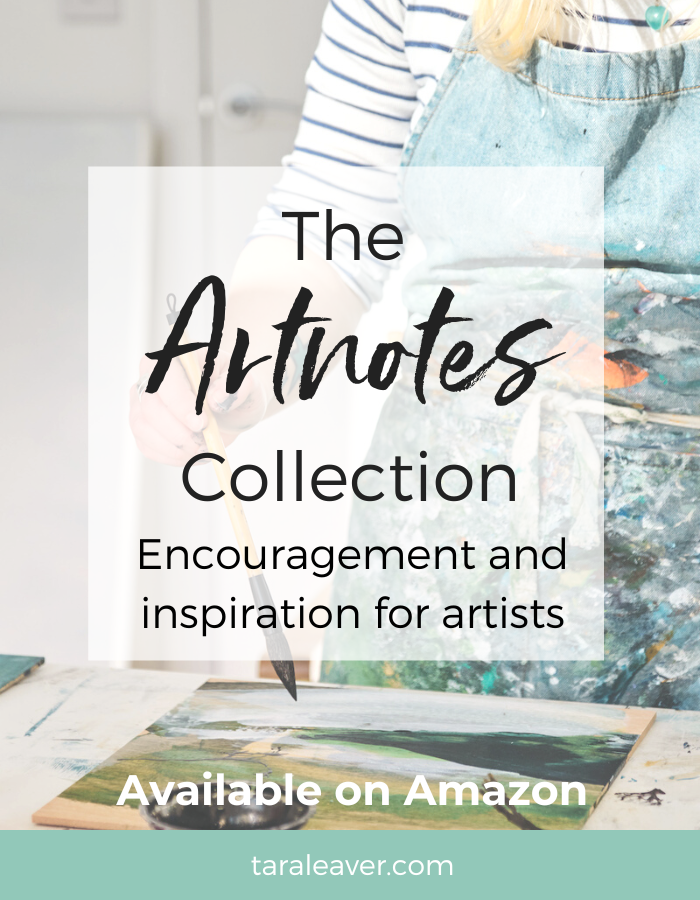
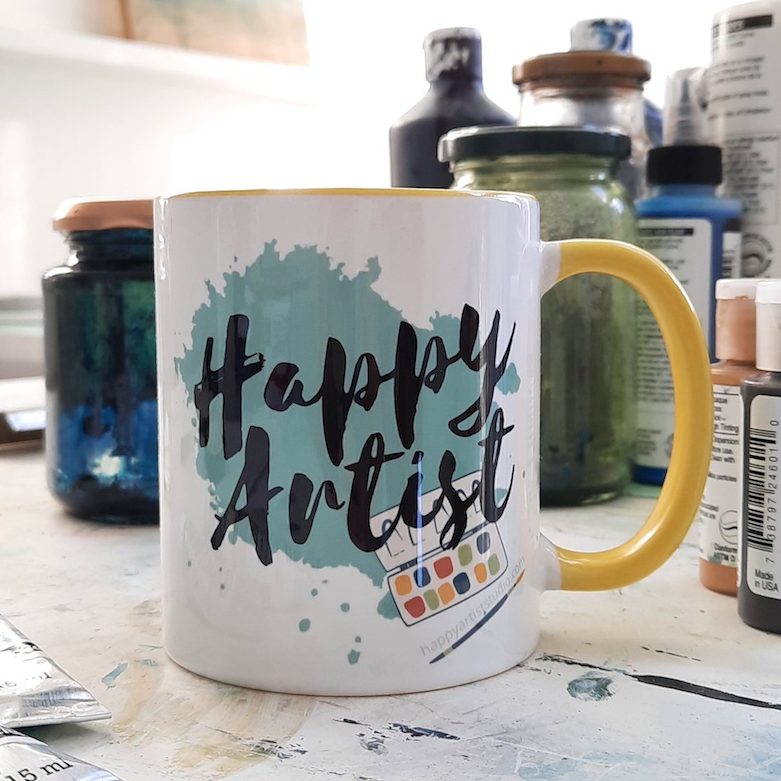
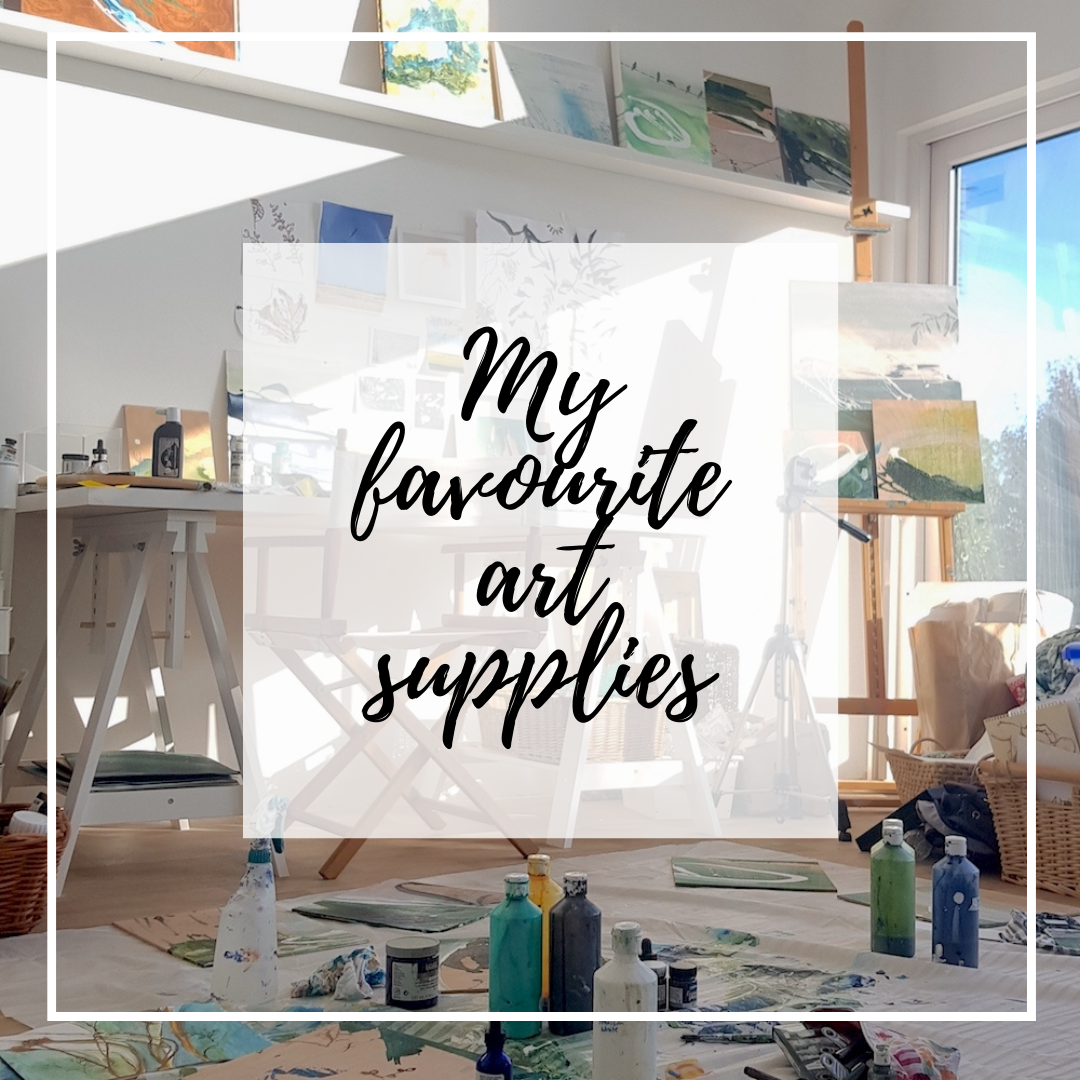
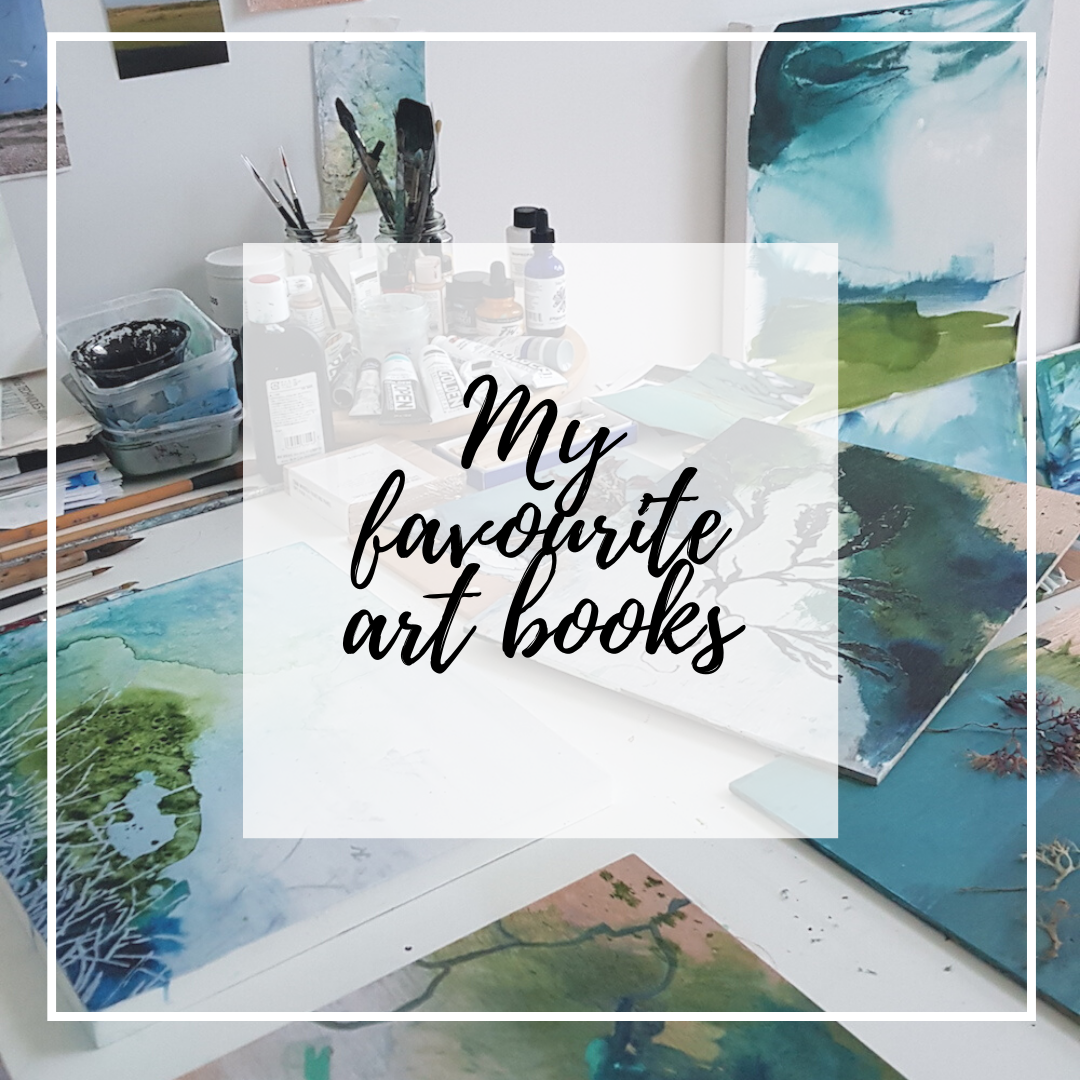
I’ve learned one thing about how art is perceived by others: every time I show my work I get a lot of positive feedback about works I hardly consider worth showing. And pieces I really feel close to can leave most people untouched. And it’s totally ok.
Because is not about me anymore. It’s about me during the process of making. Afterwards it’s about what others read into it. Everyone sees this work with different eyes. It’s their way to see my art. Not mine.
That’s why I have no problem showing what I do when I have decided it’s finished.
One more thing, I laughed when I read what your mom said about your work. A month ago my dad said: “your latest work is really good, but the stuff you painted before was crap!”
(I try to see this as an exercise in good self-esteem rather than let it get me down) ????
Gina you always make me laugh! I love how you reframed your dad’s response, which was way harsher than my mum’s!
Also, SUCH a good point about releasing the art once you’re complete with it, and it taking on its own life in the world. That was my experience with my book too. It is so helpful to be able to let it go once you’ve finished; your part of the deal is done, and after that it’s none of your business. That’s why I’m inclined to agree with Elizabeth Gilbert about not thinking of your art as your baby. It’s not actually helpful at all if you’re looking for freedom in your creativity. Thanks so much for leaving your thoughts Gina!
When I feel like a painting is finished, I sometimes share on Instagram, and sometimes only in your Facebook group. Unrequested comments often sound like a criticism to me too, and in the past had me shrinking back more than a few times. Even still, I need to ruminate on the most well-intended of criticisms. I too have to consider the source.
Most people I know prefer or think of art as representational. My abstractified pieces are a mystery or at least less attractive to them. Under the Don’t Forget column, when the perceived criticism is coming from other artists, I would add that many people criticize in others what they actually do not like about themselves but have not faced. If the comments lack a clear pointer to, or a method for, improvement then politely thank the commenter for the consideration and then I usually ignore them, or try what was suggested in an experiment later.
Thank you for such a thoughtful and thought provoking response Andy! Such a good point about where criticism comes from, and so helpful to remember that. And yes, ‘consider the source’! A much more succinct way of putting it. 😉
It seems to me people pass comment based on their personal taste rather than on the quality or representation of a subject. There is a lot of art that I don’t LIKE but wouldn’t condemn it for that reason alone. After all many items that do little for me personally are in the most acclaimed galleries and have fetched many thousands of pounds.
Provided you have understood the various aspects of the subject, i.e. light, form, composition, tonal value etc, and have applied you best skills you must b satisfied surely. But that doesn’t mean you shouldn’t strive to still do better.
Hi Paul, thanks for stopping by and sharing your thoughts! I agree – it’s a fine line between not liking because of personal preference, and not liking because a painting isn’t quite working in a technical way; they are so intertwined as well. For me, satisfaction comes just as much, if not more, from process as from outcome. So even my most technically ‘accurate’ work isn’t necessarily the most satisfying.
Your words of wisdom and the comments from other artists are encouraging, challenging and yet reassuring, especially for those of us dipping our toes into artistic creativity. Without technical expertise or formal training one does not have the awareness that such knowledge provides. We are indeed vulnerable. Can I sharr what msy seem irrelevant? I teach Pilates at a studio called Inside Out .. where the focus is on tuning into our physical being and observing and adjusting our movements for function flow and well being. I hear myself say over and over to my beginner clients “analyse and adjust rather than criticize and correct” .. it appears to help find joy in their process and progress. Self exploration and self expression and self awareness and confidence are intertwined. The support you provide here is invaluable and helps beginners genuinely seek to improve within a safe framework. Thankyou.
Judy I love that phrase – analyse and adjust rather than criticise and correct! So freeing! I wish I could tattoo it on all my students’ foreheads. 😉 Thank you for the kinds words; we’re clearly on a similar wavelength in terms of approach within our respective areas. 🙂
I am just looking to have pieces critiqued as they are produced. Do you teach the principles and elements of design? How much would each critique session cost?
Hi Tom – I don’t offer critiques and my work focuses on art as self expression rather than the specific techniques. 🙂